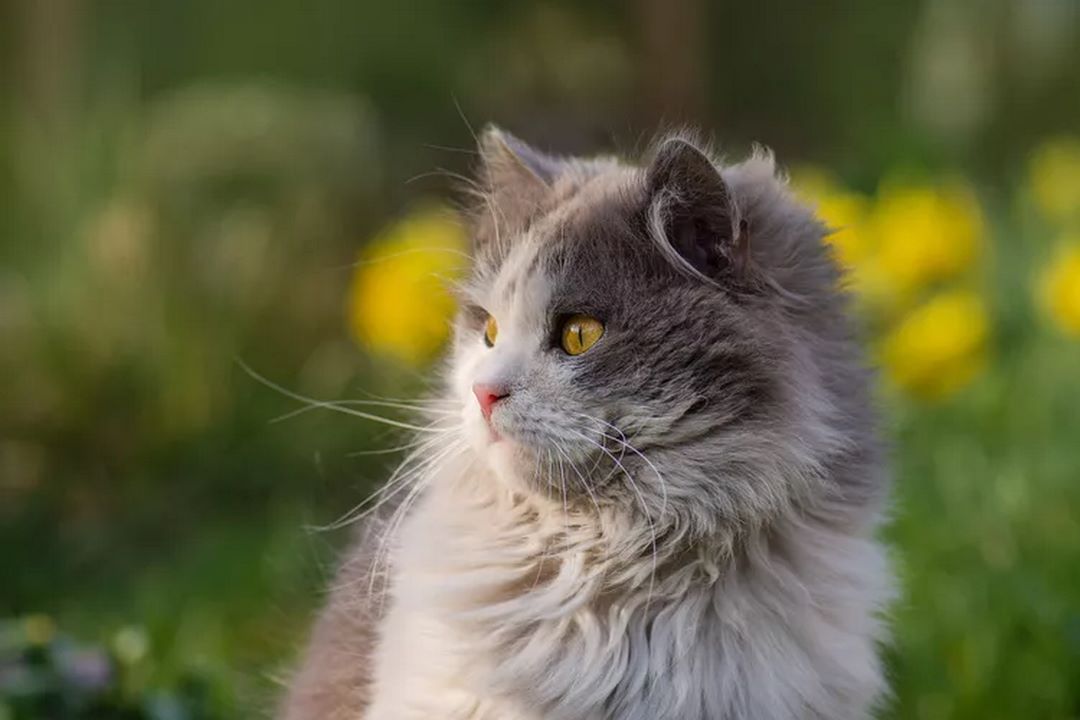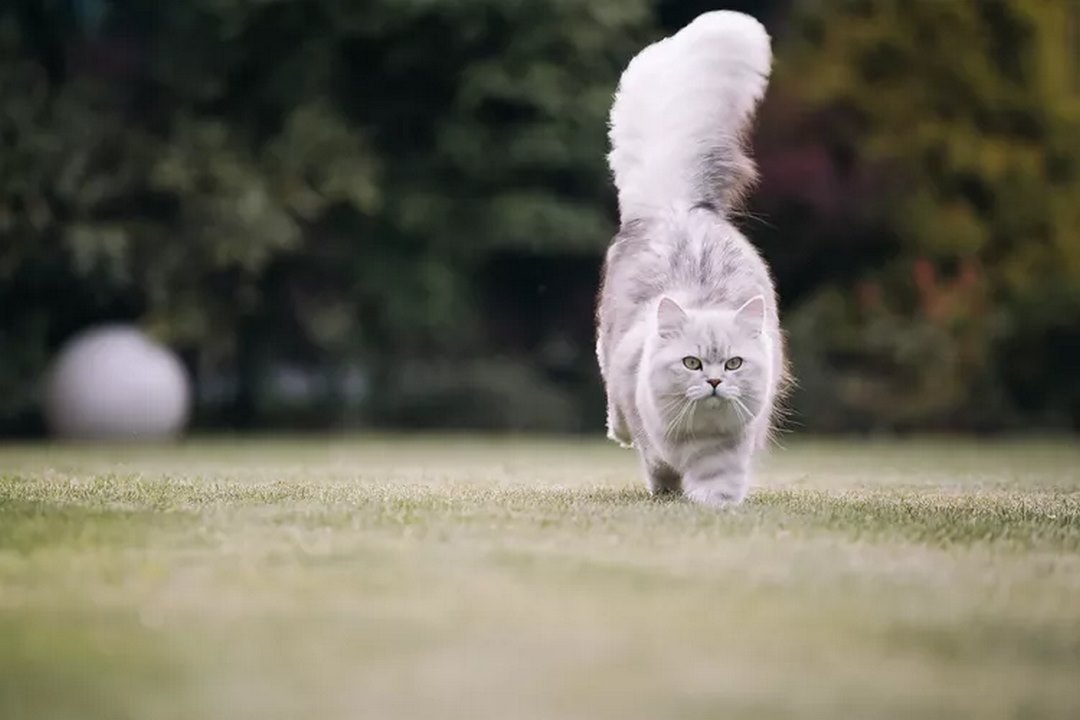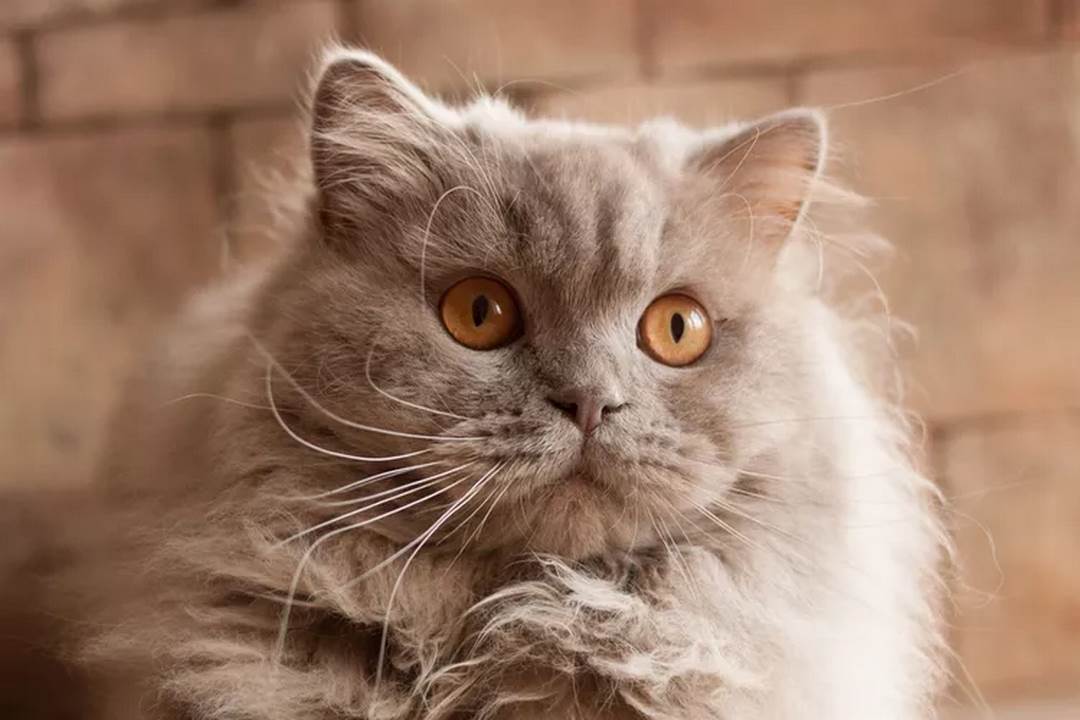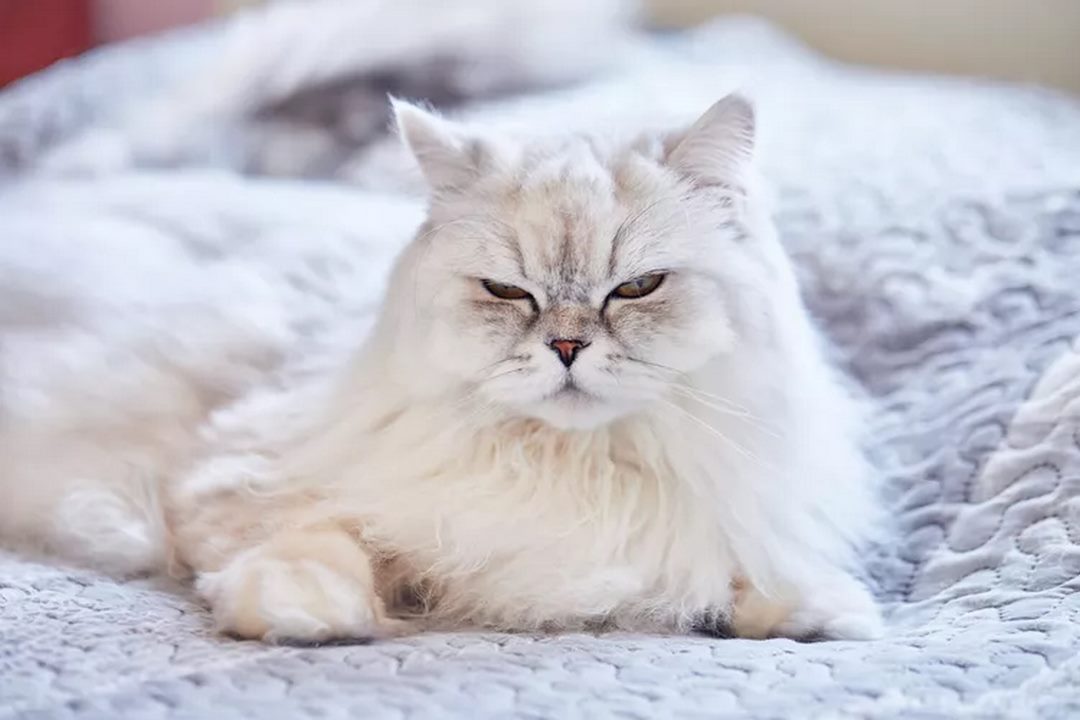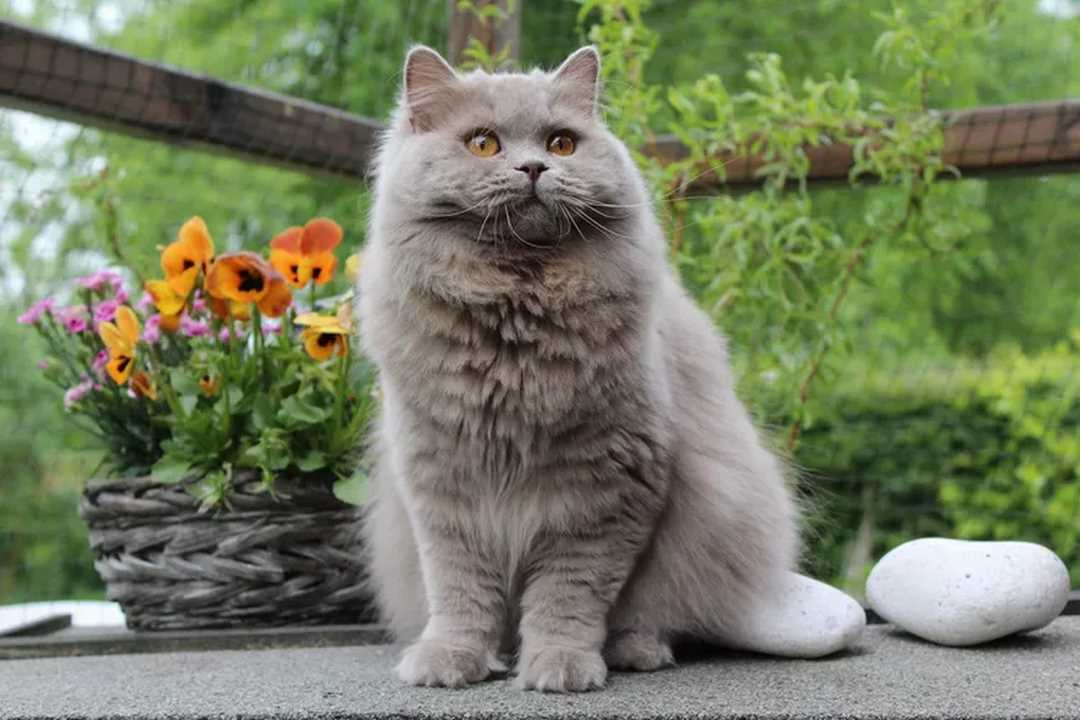The British Longhair is a fluffy, round-faced cat with an adorable personality. These cuddly felines originate from the UK and are a cross between the British Shorthair and Persian cats. While British Longhairs have technically existed for centuries, they’ve only recently been recognized as their own distinct breed.
These lovable cats are affectionate, loyal, and low-maintenance. If you’re looking for a family pet or a devoted companion who doesn’t require too much attention, the British Longhair is an excellent choice.
Overview of the British Shorthair
| OFFICIAL NAME | British Longhair |
| HEIGHT | 12 to 14 inches (~ 30.5 to 35.5 cm) |
| WEIGHT | 8 to 16 pounds (~ 3.6 to 7.2 kg) |
| LIFESPAN | 12 to 15 years |
| GOOD WITH | cats, children, dogs, families, elderly people |
| TEMPERAMENT | affectionate, sociable |
| INTELLIGENCE | high |
| COAT | long |
| COLORS | black/ebony, blue/gray, chocolate/brown/sable, cinnamon, cream/beige/tan, fawn, lavender/silver, lilac, red/orange, white |
| OTHER FEATURES | easy to train, human-friendly, pet-friendly, stranger-friendly, great for first-time pet owners, excellent house cat, prone to weight gain, requires regular grooming, tends to be loyal, tolerates being alone |
Appearance
British Longhair cats are medium-sized with a luxurious, long coat and a sweet, rounded face. Their large, expressive eyes and plush fur give them a charming and endearing appearance. Beneath their thick coat, these cats have a muscular and sturdy build. Typically, British Longhairs weigh between 8 and 16 pounds (around 3.6 to 7.2 kg), with males generally being heavier.
Their long fur is usually dense and straight, which can make them appear larger than they actually are from a distance. The coat is soft and thick, available in a range of colors including black, lavender, chocolate, and gold. They can also have two-tone patterns, markings, or color points. Compared to other long-haired breeds, British Longhairs shed less, though they still have a dense undercoat.
British Longhairs are often compared to British Shorthairs and Persians in terms of appearance. While they share the breed standard of British Shorthairs, their long, soft coat sets them apart. The beautiful mane of the British Longhair is a result of their Persian ancestry.
Personality
These sweet cats are as pleasant as their smiling faces might suggest. British Longhairs are renowned for their calm, laid-back, and tolerant nature. They are rarely temperamental, with some even being described as lazy! While they may exhibit playful kitten behavior from time to time, they are generally less active than most other breeds and tend to become even less active as they age. They also enjoy a good amount of sleep.
These adorable cats are more than just couch companions. They are incredibly intelligent, sociable, and affectionate. British Longhairs are a loyal breed that loves their human companions and adapts well to most environments.
Despite their friendly nature, these cats also have an independent streak and are quite comfortable doing their own thing. That doesn’t mean they’ll always leave you alone—on the contrary, they’re often described as little “investigators.” True to their reputation in pop culture, these cats are quite curious. Don’t be surprised if you find them rummaging through your personal belongings or closely observing whatever you’re up to.
British Longhairs are very loving and tolerant of children, but they don’t particularly enjoy being picked up. Parents will need to teach their kids to interact with these sweet cats on the floor, petting and playing with them rather than lifting them up.
Living Needs
Thanks to their easygoing nature, British Longhairs adapt well to a variety of living environments. Their gentle, friendly demeanor makes them excellent pets for families with young children. These sociable cats adjust easily to change and are tolerant of curious kids and noisy gatherings.
They’re not clingy and can comfortably be left alone while you’re out. This independence means they might have a bit of a strong will. They prefer to do things their own way and might not always engage in playtime; lounging around is more their style. However, this doesn’t mean your British Longhair doesn’t want your attention. On the contrary, you’ll need to spend quality time showing them affection. Plenty of cuddles, attention, and the presence of other pets will help them feel less lonely.
These cats enjoy chatting and will frequently let you know when they’re hungry, thirsty, or just want some attention. If you have grumpy roommates or live in an apartment with thin walls, this breed might not be the best fit.
If you’re looking for a loving, adaptable companion that can thrive in various living situations, the British Longhair is an excellent choice. This relaxed breed fits well into family life, frequent travel, and most living circumstances, as long as they receive plenty of love and attention.

